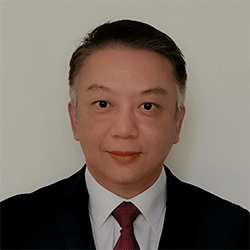Home> Academic Sessions
Session 17: Advances in biological magnetic resonance
Updated: 2024-07-22
Biological magnetic resonance is a technology that utilizes the phenomenon of magnetic resonance to study the molecular structure, dynamic properties and functions of biological systems. It includes biological nuclear magnetic resonance, paramagnetic resonance and magnetic resonance imaging.
Biological magnetic resonance technology not only helps the general public understand the molecular basis of life processes in basic scientific research, it also provides crucial diagnostic information in clinical medical practice. It serves as a bridge connecting disciplines such as biophysics, chemistry and medicine.
The session on advances in biological magnetic resonance will feature domestic and international experts, scholars and graduate students, who will deliver thematic reports and engage in academic discussions.
The session will deal primarily with the development of biological magnetic resonance technology and methods in the context of multidisciplinary integration, with a particular focus on structural biology approaches that integrate nuclear magnetic resonance with other biophysical techniques, as well as novel nuclear magnetic probes and computational methods for studying the structure and dynamics of biomolecules such as proteins and nucleic acids. It will also explore the role of AI technology in assisting and advancing research in the field of biological magnetic resonance.
The session will also discuss research on applications of biological magnetic resonance technology in life sciences and medicine, especially the latest advancements in areas such as membrane and cell surface proteins, cellular in situ environmental proteins, drug and biomacromolecular interactions and medical magnetic resonance imaging.
Chairs

Tang Chun
Professor, Peking University

James Jeiwen Chou
Researcher, Interdisciplinary Research Center on Biology and Chemistry, Chinese Academy of Sciences (CAS)
Invited speakers & reports
Koh Takeuchi
Professor, The University of Tokyo
Report: NMR application in dynamic high-molecular-weight protein systems
Tang Chun
Professor, Peking University
Report: Research on ATP as a participant, regulator and initiator of phase separation
Li Conggang
Researcher, Innovation Academy for Precision Measurement Science and Technology, CAS
Report: 19F nuclear magnetic resonance spectroscopy: From in vitro to cellular and organelle studies
Olga Lebedenko
St Petersburg State University
Report: Using NMR spectroscopy and MD modeling for structural and dynamic characterization of flexible H4 tails in nucleosome core particle
Fang Xianyang
Institute of Biophysics, CAS
Report: An integrative method for 3D structure determination of large RNAs
Huang Chengdong
University of Science and Technology of China
Report: Distant on-off switching of protein activity by intrinsically disordered region
Pan Lifeng
Researcher, Shanghai Institute of Organic Chemistry, CAS
Report: Research on the structure and functional mechanism of LUBAC
Feng Yingang
Researcher, Qingdao Institute of Bioenergy and Bioprocess Technology, CAS
Report: Dynamic assembly and regulation mechanisms of cellulosomes
Xiang Shengqi
Professor, University of Science and Technology of China
Report: Solid-state NMR studies for the intrinsically disordered regions in protein aggregates
Wang Yingjie
Shenzhen Bay Laboratory
Report: Elucidating multiscale dynamics of kinase via integrative approaches
Guo Pei
Hangzhou Institute of Medicine, CAS
Report: Solution NMR investigation of a DNA aptamer targeting protein tyrosine kinase 7 reveals an intricate 3D fold guiding functional
